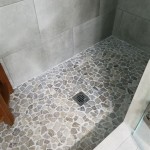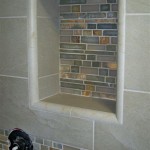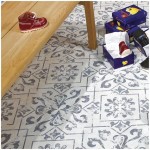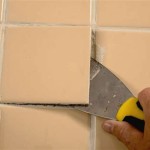Can You Put Vinyl Planks Over Ceramic Tiles?
Vinyl plank flooring has gained immense popularity due to its durability, affordability, and attractive appearance. It offers a versatile solution for homeowners seeking to revamp their floors without the hassle and expense of traditional renovations. A common question that arises is whether vinyl planks can be installed directly over existing ceramic tiles. The answer, while not a simple yes or no, involves a nuanced understanding of factors that influence the feasibility and success of such an undertaking.
Factors to Consider Before Installing Vinyl Planks Over Ceramic Tiles
Before deciding to install vinyl planks over ceramic tiles, it is crucial to consider several factors that can affect the outcome. The condition of the existing ceramic tile surface, the type of vinyl planks chosen, and potential challenges associated with the installation process are key aspects that must be carefully evaluated.
Assessing the Condition of the Existing Ceramic Tile Surface
The most important factor is the condition of the ceramic tile surface. Several factors that can affect the success of the installation include:
- Levelness: The tile surface must be relatively level. Any significant bumps or dips can create unevenness in the vinyl planks, leading to a wobbly, uncomfortable floor. A slight unevenness can be addressed using a self-leveling compound, but significant discrepancies may require removing the existing tiles and starting anew.
- Stability: Ensure that the existing tiles are firmly attached to the subfloor, and there are no loose or cracked tiles. Loose tiles can create a shifting foundation for the vinyl planks, resulting in instability and premature wear and tear.
- Cleanliness: The surface must be clean and free of any debris, residue, or coatings that could impede the adhesion of the vinyl planks. Thoroughly clean the tile surface with a suitable cleaning agent and ensure it is completely dry before proceeding with the installation.
Choosing the Right Type of Vinyl Planks
The type of vinyl planks chosen plays a crucial role in the success of the installation. While some vinyl planks are designed for direct installation over existing floors, others are not, and using an inappropriate type can result in problems:
- Click-lock vinyl planks: These planks are often recommended for installation over existing floors because they are designed for stability and ease of installation without the need for adhesives. They are ideal for flat surfaces but may be more challenging on less-than-perfect surfaces.
- Glue-down vinyl planks: These planks typically require a strong adhesive to secure them to the floor, and their suitability over existing tiles depends on the type of glue used. Ensure the adhesive used is compatible with ceramic tile surfaces and will provide sufficient bond strength for a lasting installation.
- Thickness: The thickness of the vinyl planks is also relevant. Thicker planks can help mask minor imperfections in the tile surface, while thin planks may accentuate unevenness. Consider the overall thickness and the required level of cushioning for a comfortable floor.
Potential Challenges and Considerations
While installing vinyl planks over ceramic tiles can be a viable option in many cases, it is essential to acknowledge certain challenges:
- Increased floor height: Installing vinyl planks over existing tiles will inevitably add to the overall floor height. This may affect the transition to other rooms or the clearance required for doors and appliances. Carefully measure the additional height and plan accordingly to avoid any potential issues.
- Grout lines: The presence of grout lines in ceramic tiles can create complexities in the installation process. If the grout lines are wide or deep, they may require some addressing to ensure a smooth surface for the vinyl planks. This could involve filling the grout lines with a suitable sealant or sanding them down to create a more uniform surface.
- Sound insulation: Vinyl planks may not provide sufficient sound insulation, especially over hard surfaces like ceramic tiles. If sound reduction is a priority, consider using an underlayment specifically designed for soundproofing. This underlayment will create a barrier between the vinyl planks and the existing tile surface, reducing noise transmission and providing a more comfortable experience.
Conclusion
Installing vinyl planks over ceramic tiles can be a feasible option, but it requires careful consideration of the factors discussed above. Assessing the condition of the existing tile surface, selecting the appropriate type of vinyl planks, and addressing potential challenges are crucial steps towards achieving a successful and lasting installation. Consulting with a flooring professional can provide valuable insights and ensure that the installation process aligns with the specific requirements and desired outcome.

Installing Luxury Vinyl Over Existing Tiles Choices Flooring

Transform Your Home Installing Vinyl Flooring Over Ceramic Tiles City Wall And Floor

New Vinyl Plank Flooring Over Tile Table And Hearth

New Vinyl Plank Flooring Over Tile Table And Hearth

A Guide To Installing Vinyl Plank Flooring Over Ceramic Tile Floors Blvd

How To Install Luxury Vinyl Plank Over Tile Flooring

New Vinyl Plank Flooring Over Tile Table And Hearth

Can You Install Vinyl Plank Over Tile Flooring America

How To Install Vinyl Plank Floors In A Bathroom Over Tile

What Type Of Flooring Can You Put Over Ceramic Tile
Related Posts








